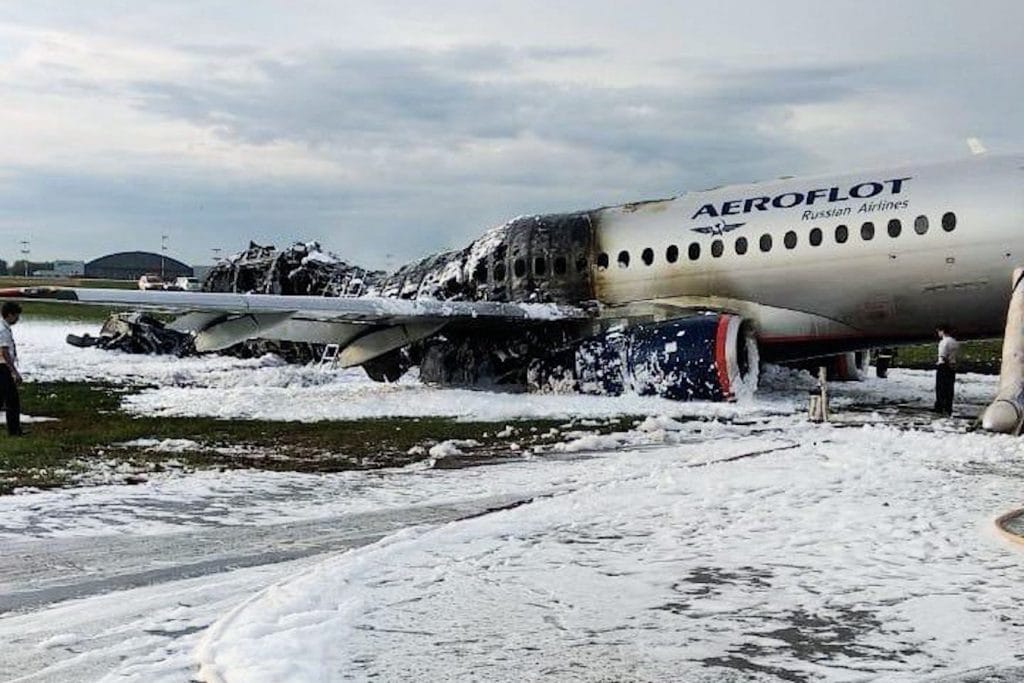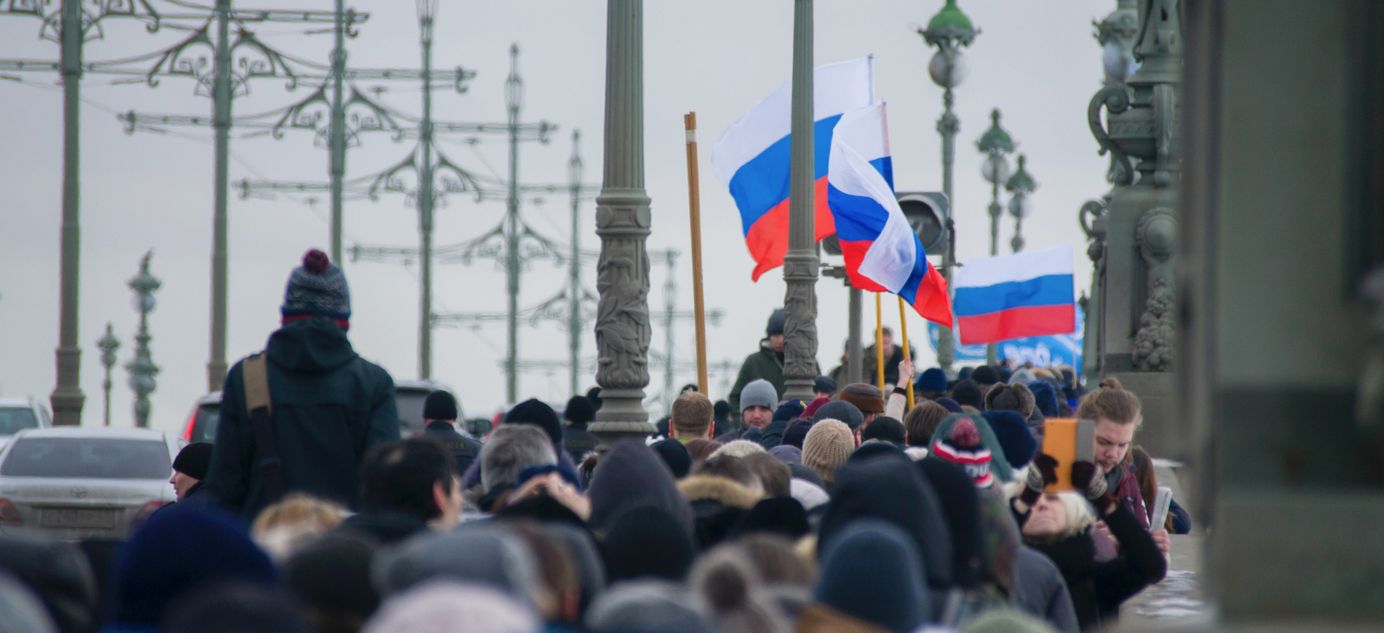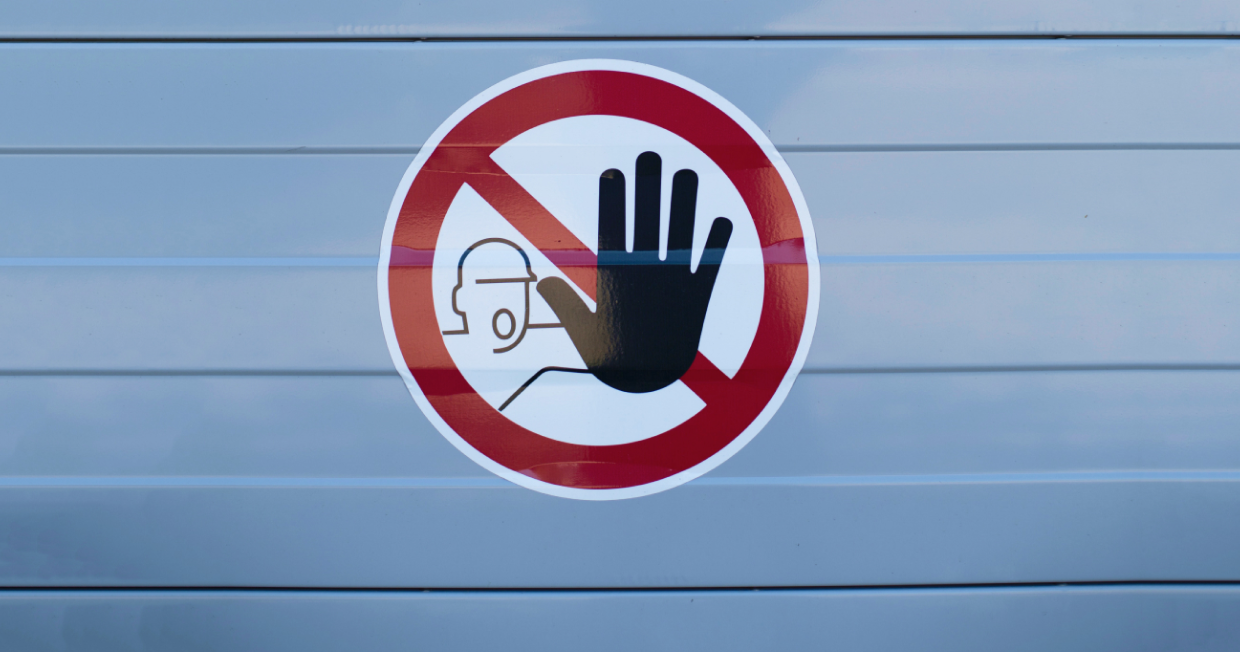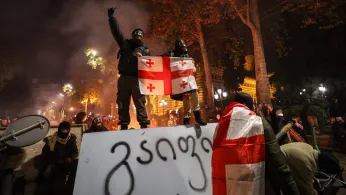
A fatal air crash ends the commercial hopes of Russia’s newest passenger aircraft
Hello! This week we take a detailed looks at the horrific air disaster in Moscow that cost 41 lives and what it means for the future of the first commercial Russia aircraft has produced since the collapse of the Soviet Union. We also explain why U.S. investment bank Morgan Stanley quitting Russia is such a bad sign for the investment climate and take a look at the life of Sergei Dorenko, a legendary journalist who helped bring Putin to power, who died this week.
A fatal air crash ends the commercial hopes of Russia’s newest passenger aircraft

What happened
A total of 41 people died on Sunday when a Sukhoi Superjet caught fire during an emergency landing in Moscow. The disaster immediately led to an unsavoury PR war between the state-owned companies involved in the Superjet project. But the most important business outcome is likely to be the end of that Superjet, the first civilian aircraft Russia has produced since the end of the Soviet Union, will ever be a commercial success.
- Immediately after take off from Moscow’s Sheremetyevo airport, the Sukhoi Superject operated by Aeroflot, Russia’s national carrier, was hit by lightning, and its automatic flight control system stopped working. The pilots made an emergency landing, but the plane bounced three times on the runway before its tail end was engulfed in a dramatic fireball. Only 37 people of the 78 on board survived.
- It seems likely the main reason for the disaster was that the pilots were not trained to fly under such difficult conditions. Even though the plane’s systems switched into an emergency mode after the lightning strike, the pilots should have been able to land.
- The Superjet is the first commercial aircraft developed in Russia in over 30 years. It was an important political project during President Vladimir Putin’s first terms in office: Boeing and other Western companies took part and the state spent invested more than $2 billion. Since the plane has been used for commercial flights (beginning in 2011), it has crashed once, during a 2012 test flight in Indonesia. Pilot error is believed to be the reason for that disaster.
- The Superjet has never had any fatal accidents caused by technical failure, but it does have technical problems that make the aircraft unprofitable to operate. The main issue is a lack of spare parts, which means the Superjet is used by Russian airlines half as frequently as Boeing and Airbus planes. The only two foreign buyers of the Superjet, Mexico’s Interjet and Ireland’s Cityjet are both phasing out the planes due to the servicing difficulties.
- The largest buyer of Superjet is Aeroflot (which owns 50 of the 180 Superjets made), which doesn’t hide its unhappiness and regularly complains about the producer, Sukhoi (even though its contract means Aeroflot receives compensation for aircraft downtime). But Aeroflot doesn’t have a choice: Superjet is politically important, and the state-owned airline is obliged to be major buyer.
This week’s crash was the most widely reported such tragedy in Russian history. Firstly, it look place in Moscow’s largest airport and was filmed on dozens of mobile phones. Secondly, it was the first fatal crash of a scheduled flight on Russia’s newest civil aircraft. As a result, discussions about the crash in the media and on social networks became a PR war.
- The crash occurred at 6:30pm, and within an hour it was clear there were fatalities. But, added together, Russia’s three main national television networks dedicated (Rus) less than 10 minutes of their airtime that day to the disaster.
- Major television channels and at least half of the country’s most popular mainstream media outlets avoided (Rus) mentioning Aeroflot in their coverage. Many of these publications have previously been accused of burying negative news about Aeroflot in order not to jeopardise large advertising contracts with the airline.
- Officially, both Aeroflot and Sukhoi have said almost nothing, but accusatory articles in the media and critical posts on social networks began appearing the day of the crash. Posts supporting Aeroflot argued that a flawed plane was forced on the airline by the government, while posts in defense of Superjet blamed Aeroflot for not training its pilots properly. But there has been a PR war between Aeroflot and Sukhoi for years, and this makes it difficult to take any of these points very seriously.
- The real “gift” for PR people on both sides, however, was images of passengers leaving the plane with luggage. In the first 24 hours after the crash, social media users were fixated on whether those passengers who stopped to grab their bags were responsible for the deaths of others. It quickly became clear that they were not.
The tragedy means Superjet is unlikely to find any new buyers. Although the first Superjet crash in Indonesia wasn’t linked to technical problems, it meant the plane lost its chance of success in Asia, a market on which Sukhoi had been counting. Western airlines were also likely to steer clear of Superjet after articles about problems at Interjet, which had to cannibalize some of its planes for spare parts. Now, after the Moscow disaster, even Aeroflot has an excellent argument to help convince the government to allow it not to buy a plane it didn’t need in the first place.
Why the world should care
There are no facts yet available to suggest that Superjet is to blame for the tragedy, but the general public is skeptical: 186,000 people have already signed a petition to ground the aircraft. The issue is not just the accidents, but the poor reputation of Russia’s aircraft manufacturing industry as a whole. And the public is equally suspicious about the next, and far more ambitious Russian aviation project, the MC-21, which is supposed to compete with the Boeing 737 and the Airbus 320. This project already has already run into sanctions-related problems, and will now face an uphill battle to even have a shot at being commercially successful.
The most successful foreign investment bank in Russia is quitting
What happened
U.S. investment bank Morgan is shuttering its operation in Russia. The era of big deals from which the bank profited so handsomely is, of course, long over, but Morgan Stanley could have soldiered on; after all, it survived the 1998 default. The departure means Morgan Stanley has decided political risks now outweigh hopes that the Russian economy will ever boom again.
- Morgan Stanley opened a representative office in Moscow in the mid-1990s. Unlike its three major competitors in Russia — Goldman Sachs, Merrill Lynch and Lehman Brothers — Morgan Stanley did not leave during the terrible financial crisis of 1998. To the surprise of many, its decision to stay proved to be a smart one.
- Even by early 2002, “there [still] wasn’t any business,” recalls Rair Simonyan, the head of Morgan Stanley in Russia at the time. Their first big deal was the privatization of Lukoil later that year, and then the market took off. Until the crisis of 2008, Morgan Stanley was a leader “across practically all products,” Simonyan said in a conversation with The Bell, and he called the period between 2002 and 2008 the “best time for investment banking in Russia.” Revenues in Russia’s capital markets and investment banking sector at the time were ranked second or third in Europe, next to Germany and the UK.
- Involvement in Rosneft’s 2006 IPO, working with the government on the energy sector, and advising on the sale of major assets from the fallen oil giant Yukos all gave Morgan Stanley a significant competitive advantage. Simonyan was even on good terms with Rosneft CEO Igor Sechin: such good terms that, after Simonyan left Morgan Stanley, Sechin suggested he build a new bank for Rosneft (in the end, nothing came of this).
- When Simonyan left the bank in 2012, Morgan Stanley was the undisputed leader in Russia in M&A advisory (they managed $35 billion of deals in 2011) and ranked third among underwriters in the equity market ($1.3 billion worth of business).
- As the Russian economy became more and more dominated by the state, the potential market for Morgan Stanley shrank. Sanctions also took their toll. It simply became dangerous and unrewarding for the bank to do business in Russia. “It was the most successful foreign bank in Russia,” Simonyan said. “In the absence of political differences, U.S. banks did a lot to finance Russian businesses and the economy, but, in recent years, there has been practically no investment banking business left for them.”
Why the world should care
Morgan Stanley’s departure is a bad sign. It means that — despite excellent relations with the government and state-owned companies — even the most experienced foreign player in the Russian investment banking market sees no prospect of making money in the near future.
The death of a journalist attack-dog from the 1990s sparks memories of a once-powerful independent media
What happened
Sergei Dorenko, 59, died on Thursday after suffering an aortic rupture while riding his motorcycle in central Moscow. One of the most prominent Russian journalists of the 1990s, the talented, but cynical, Dorenko, who worked for a television channel owned by oligarch and kingmaker Boris Berezovsky, became known as the “telekiller” for the way he could destroy political careers. In 1999, his programme was used by the Kremlin to discredit Putin’s presidential rivals and, in the 2000s, when Berezovsky joined the opposition, Dorenko attacked Putin himself. This ended with Dorenko being fired, his programme shut down and, eventually, the state seizing control of Berezovsky’s TV channel.
- Dorenko made his name as the host of a weekly news programme on ORT (now Channel One). In the 1990s, ORT was Russia’s largest independent TV channel and was owned by Berezovsky. During the 1999 presidential election, in which Berezovsky supported Putin, Dorenko’s primary goal was to discredit Putin’s opponents — above all, former Prime Minister Yevgeny Primakov and Moscow Mayor Yuri Luzhkov. Dorenko achieved his aim in spectacular style, accusing Luzhkov of having links to criminal gangs and suggesting the 69 year-old Primakov could not run the country because of poor health. The culmination of this campaign was a show in which Dorenko described an operation Primakov had apparently had on his hip, and spent 20 minutes showing a close-up of a similar operation with all the gory details. Dorenko achieved his goal with flying colors: by the end of 1999, Primakov’s rating had collapsed so badly that he didn’t even put himself forward as a presidential candidate.
- In 2000, Dorenko’s boss, Berezovsky, fell out with Putin and switched to supporting the opposition. Dorenko, who had been Putin’s biggest advocate, became an equally fervent critiс. He criticized Putin on his show for destroying freedom of speech and, in a show in September 2000, he all but accused Putin of being responsible for the Kursk submarine tragedy, in which more than 100 sailors lost their lives. This was the last straw: Dorenko was fired, and his show cancelled. Putin later forced Berezovsky to hand control of ORT to the state.
- Even Dorenko’s erstwhile foes were quick to offer their tributes after his death, with Putin expressing condolences via his spokesman. Former Moscow Mayor Yuri Luzhkov on Friday described Dorenko as an “evil genius.”
- Colleagues remember Dorenko as a talented journalist-for-hire who re-fashioned his image in the 2000s. After he was fired, Putin offered Dorenko a place on his team, but Dorenko refused — and stopped selling himself to the highest bidder. “He was a key person in those already-forgotten times when journalism was the fourth estate”, said Andrei Vasilev, a ex-colleague and former editor-in-chief of Kommersant newspaper.
Why the world should care
Even after his fall into relative obscurity, Dorenko remained a living reminder that there was a time in Russia when TV journalists had real power — and were not afraid to use it. His death makes that political age seem more distant than ever.



